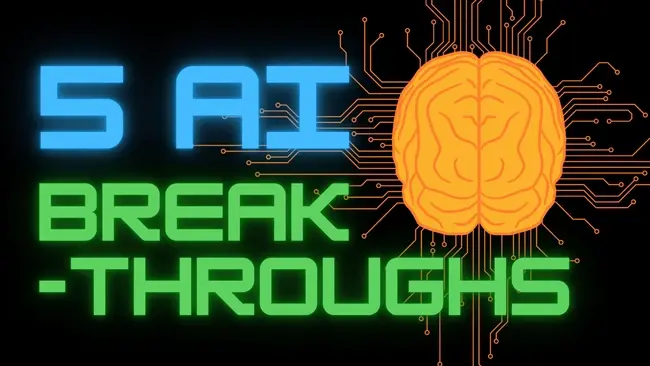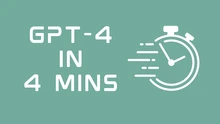
With AI technologies like DALL-E and ChatGPT bursting into the zeitgeist, it’s easy to think that we’ve just seen a quantum leap in AI. But AI’s evolution can be traced back to a number of technological, scientific and philosophical breakthroughs taking place over several centuries.
Watch below to see 5 of AI’s biggest breakthrough moments.
Narrow & General AI
We start off in the 17th Century for the lightbulb moment. You may know the quote “I think, therefore I am.” This quote is from René Descartes in his book “Discourse on the Method of Rightly Conducting One's Reason and of Seeking Truth in the Sciences” (a ridiculously long title). In his book Descartes says “even though such machines could do some things as well, or better, than humans, they would inevitably fail in others, which would reveal that they were acting not through understanding”. This is the first known distinction between what we now know as narrow and general AI.
Narrow AI refers to artificial intelligence systems that are specifically designed to perform a single task.
General AI refers to AI systems with the ability to perform any intellectual task that a human can, encompassing multiple domains and functions.
The Turing Test
In 1950, science pioneer Alan Turing described what we now know as “The Turing Test” – a test for determining whether a machine can “think” like a human. The test involves evaluating a machine's ability to carry out a natural language conversation with a human judge. If the judge is unable to reliably distinguish the machine's responses from those of a human, the machine is said to have passed the Turing Test.
Turing believed that a machine would pass his test by the end of the twentieth century. His prediction was twenty years premature: the generative AI chatbot ChatGPT is reportedly the first AI system to have passed the test.
ELIZA
Before Alexa, Siri, and ChatGPT, there was ELIZA. Eliza was the world’s first chatbot wired by AI. Created in the 1960s at MIT, ELIZA was designed to imitate a Rogerian therapist by rephrasing a patient's statements as questions, and asking them back to the patient.
Despite its relatively simple code, some users became emotionally attached to the program, and forgot they were talking to a computer. Making ELIZA one of the first times the line between human and machine was blurred.
Deep Blue
By the 1990s AI had been gaining publicity. But it needed a landmark event to really grab people's attention and put it on the map. This moment came in 1997 when world chess champion Garry Kasparov sat down to face IBM’s Deep Blue supercomputer in what has become one of the most famous chess matches of all time. Deep Blue was able to win by processing thousands of possible moves every second based on the data from earlier professional chess games. Or as IBM put it, Deep Blue was “playing the ghosts of the grandmaster's past”.
This win illustrated the rapid advancement of AI software to the rest of the world.
ChatGPT
For anyone who’s been living under a rock for the last few months, ChatGPT is a generative AI chatbot created by OpenAI. It was released in November 2022 and took the world by storm, gaining 1 million users in just 5 days.
But why is ChatGPT such a game changer? Well, because it’s basically magic. You ask it a question to pretty much anything, and it gives you an intelligent answer. You ask it to do something for you, and it’ll probably do it.
Don’t take my word for it, try ChatGPT yourself and give it a go. You’ll be amazed at what it can do.









